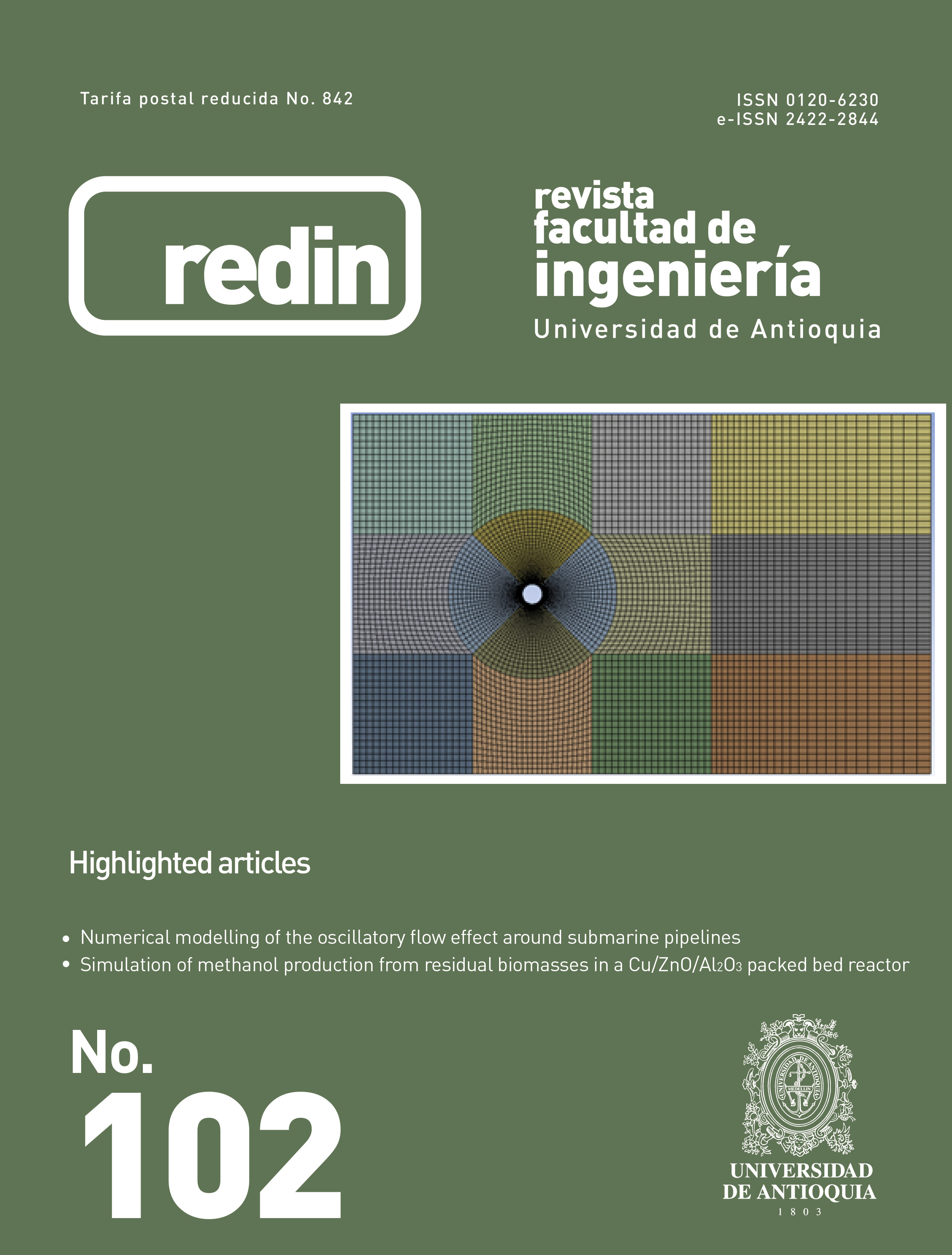Conceptual design of an alignment device for transfemoral prosthesis
DOI:
https://doi.org/10.17533/udea.redin.20200805Keywords:
lower limb amputation, gait, prototypes, design engineering, 3D printingAbstract
The alignment of lower limb prosthesis is one of the most significant procedures for prosthetic adaptation since it allows greater comfort and fulfillment of the prosthesis function. Prosthetic misalignment can lead to severe consequences for the patient, such as gait instability and increased load on the residual limb. The fitting and alignment of the prosthetic system is a highly subjective procedure that relies mainly on the professional experience of the prosthetist. This study aims to design a prototype of a low-cost alignment device for lower transfemoral prosthesis to be used temporarily during the prosthesis static alignment. The conceptual design methodology was implemented. The device was modeled in SolidWorks, and the mechanical resistance of the device was determined in a finite element analysis in Ansys. Among the tested materials, CarbonFil exhibited the best behavior showing promising results for a 3D printed alignment device prototype. The viability of this device’s massive production should be considered to further reduce its cost and be implemented in a larger number of prosthetic centers worldwide.
Downloads
References
(2018, Feb.) Sala situacional de las personas con discapacidad (PCD). Ministerio de Salud y Protección Social. Bogotá, Colombia. [Online]. Available: https://bit.ly/3h6svZj
Manual para amputados de extremidad inferior, Institut Desvern de Protètica, Barcelona, España, 2003.
K. R. Kaufman, S. Fritoli, and C. A. Frigo, “Gait asymmetry of transfemoral amputees using mechanical and microprocessorcontrolled prosthetic knees,” Clin Biomech., vol. 27, no. 5, June 2012. [Online]. Available: https://doi.org/10.1016/j.clinbiomech.2011.11.011
Documento de posición conjunta sobre suministros de dispositivos de movilidad en entornos con recursos escasos, Organizacion Mundial de la Salud, Geneva, Switzerland, 2012.
M. S. Zahedi, W. D. Spence, S. E. Solomonidis, and J. P. Paul, “Alignment of lower-limb prostheses,” J. Rehabil. Res. Dev., vol. 23, no. 2, pp. 2–19, Apr. 1986.
M. S. Pinzur and et al., “The effect of prosthetic alignment on relative limb loading in persons with trans-tibial amputation: A preliminary report,” The Journal of Rehabilitation Research and Development, vol. 32, no. 4, pp. 373–377, Dec. 1995.
J. Sánchez, R. J. Hernández, and J. E. Torres, “The mechanical design of a transfemoral prosthesis using computational tools and design methodology,” Ingeniería e investigación, vol. 32, no. 3, pp. 14– 18, Dec. 2012.
O. Adebayo and et al., “Design of a new prosthetic alignment adaptor with quantitative alignment and height adjustment,” in 37th Annual Northeast Bioengineering Conference (NEBEC), Troy, NY, USA, 2011, pp. 1–2.
(2009) Alignment systems step forward. The O&P Edge. Accessed Apr. 03, 2019. [Online]. Available: https://bit.ly/3kU4wPd
P. Rayothee and K. Sasaki, “Design and analyses of stress - strain distribution in new coupling for lower limb prosthesis (CLLP) using finite element method,” in 7th Biomedical Engineering International Conference, Fukuoka, Japan, 2014, pp. 1–4.
Artlimb, the art of prosthetics. ArtLimb. Accessed Jul. 2019. [Online]. Available: https://bit.ly/318Tv4L
A. Soma, “Proceso de elaboración de dispositivos ortopédicos para la marcha órtesis larga tipo KAFO prótesis modular transfemoral tipo ovo-longitudinal,” Undergraduate, Universidad Don Bosco, San Salvador, El Salvador, 2007.
I. Horváth, “On some crucial issues of computer support of conceptual design,” in Product Engineering, D. Talabă and T. Roche, Eds. Dordrecht, Netherlands: Springer Netherlands, 2005, pp. 123–142.
K. T. Ulrich and S. Eppinger, Diseño y desarrollo de productos, 5th ed. Ciudad de México, México: McGraw-Hill, 2013.
(2017) ABS y PLA: diferencias, ventajas y desventajas. Impresoras 3D. Accessed Jul. 2019. [Online]. Available: https://bit.ly/3jkAwKZ
Catalogue 3d printer filaments. Formfutura. Accessed Apr. 03, 2019. [Online]. Available: https://bit.ly/34gkUDZ
J. A. Vélez, L. M. Bustamante, and J. A. Villarraga, “Relación entre la longitud de miembro residual y la distribución de esfuerzos sobre el muñón para amputados transfemorales,” Revista EIA, no. 23, pp. 107–115, 2015.
R. C. Hibbeler, Mecánica de materiales, 6th ed. Ciudad de México, México: Pearson, 2006.
F. M. AL-Oqla and S. M. Sapuan, Materials Selection for Natural Fiber Composites. Cambridge, England: Woodhead Publishing, 2017.
A. Staros, “Dynamic alignment of artificial legs with the adjustable coupling,” Artificial Limbs, vol. 7, pp. 31–43, 1963.
Prosthetics upper limb. Ottobock. Accessed Apr. 03, 2019. [Online]. Available: https://bit.ly/32aVc0G
L. J. Haberman and L. E. Dallos, “Alignment assembly for a prosthesis,” U.S. Patent US7 338 532B2, Mar. 04, 2008.
S. Kapp and J. A. Miller, “Lower limb prosthetics,” in Care of combat amputee, P. F. Pasquina, R. A. Cooper, and M. K. Lenhart, Eds. Washington DC, USA: Government Printing Office, 2009, pp. 553– 580.
Published
How to Cite
Issue
Section
License
Copyright (c) 2020 Revista Facultad de Ingeniería Universidad de Antioquia

This work is licensed under a Creative Commons Attribution-NonCommercial-ShareAlike 4.0 International License.
Revista Facultad de Ingeniería, Universidad de Antioquia is licensed under the Creative Commons Attribution BY-NC-SA 4.0 license. https://creativecommons.org/licenses/by-nc-sa/4.0/deed.en
You are free to:
Share — copy and redistribute the material in any medium or format
Adapt — remix, transform, and build upon the material
Under the following terms:
Attribution — You must give appropriate credit, provide a link to the license, and indicate if changes were made. You may do so in any reasonable manner, but not in any way that suggests the licensor endorses you or your use.
NonCommercial — You may not use the material for commercial purposes.
ShareAlike — If you remix, transform, or build upon the material, you must distribute your contributions under the same license as the original.
The material published in the journal can be distributed, copied and exhibited by third parties if the respective credits are given to the journal. No commercial benefit can be obtained and derivative works must be under the same license terms as the original work.










 Twitter
Twitter